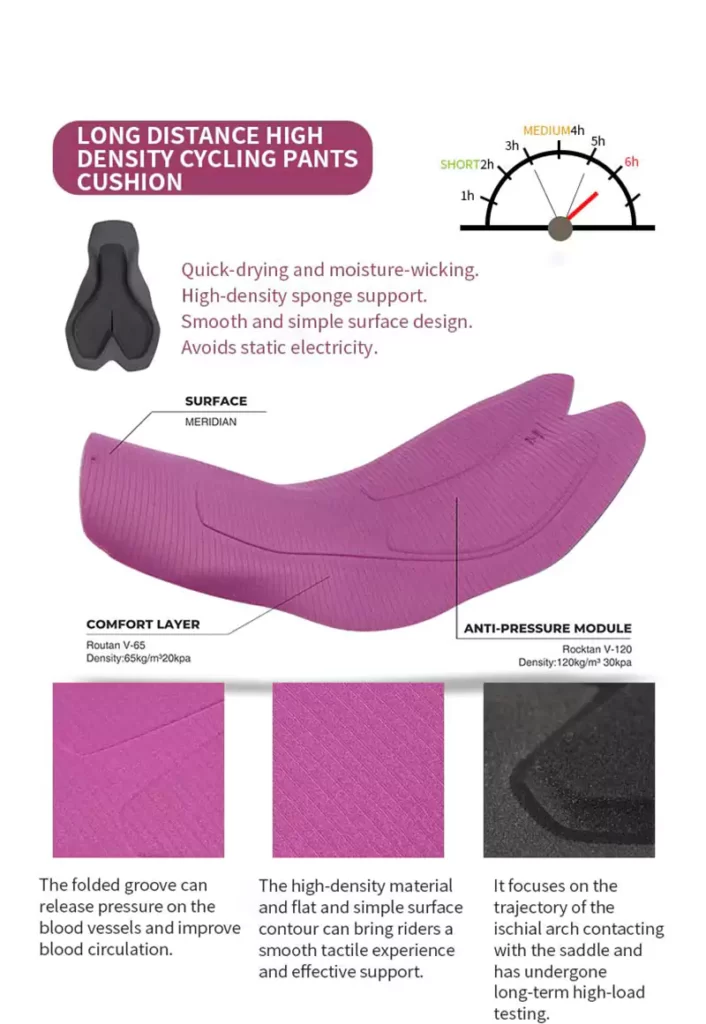As an avid cyclist, having a good pair of cycling shorts is one of the most important gear investments you can make. Check this cycling shorts buying guide now.
Cycling shorts are designed specifically for bike riding and can provide comfort, support, and help prevent soreness. They are not just a luxury item for hardcore cyclists – anyone who rides a bike regularly can benefit greatly from a pair of high-quality cycling shorts.
Cycling shorts have a padded crotch area, called a chamois, that helps cushion you from the hard bike seat and prevents chafing. The chamois absorbs shock and moisture, and is shaped to fit while in a cycling position. It is made of layers of padded fabric and sometimes includes a gel insert. Without the chamois, the friction from the bike seat can quickly become uncomfortable and even painful, especially on longer rides.

Cycling Shorts Buying Guide
- Gel vs foam padding. Cycling short pads come with either gel or dense foam padding. Gel pads provide more cushioning but can feel bulky to some cyclists. Foam pads are more lightweight but may compress over time. It depends on your preference for how much padding you need. Gel pads are good for beginners or long distance riding.
- Pad thickness. The thicker the pad, the more cushioning it will provide. However, too thick of a pad can feel uncomfortable for some. Look for a pad that is thick enough to provide adequate cushioning for your needs. For most recreational riders, a pad between 3 to 6 millimeters thick is a good start. Thinner pads are better suited for racing.
- Shape and size. The pad should fit comfortably in the crotch area while in a riding position. It should not feel excessively bulky between your legs. Pads come in different shapes, widths and lengths to suit different needs. Make sure the pad feels evenly distributed and supports your sit bones.
- Adjustable placement. Some higher end cycling shorts allow you to adjust the front-to-back placement of the pad to suit your preferences. This allows you to position the thickest part of the pad under your sit bones for maximum comfort. This is a useful feature if you experience chafing or soreness in a particular area.
- Antimicrobial treated. Cycling short pads should have an antimicrobial treatment to prevent the growth of bacteria. The pad absorbs moisture and sweat during riding and can harbor bacteria without antimicrobial technology. This is important for hygiene, comfort and making your cycling shorts last longer.
- Chamois cream. Cycling short pads work best when used in conjunction with a chamois cream. The cream helps prevent chafing and friction between the pad and your skin. It lubricates the area and has its own antibacterial properties. Using chamois cream, especially on long rides, will greatly increase your comfort.

Most cycling shorts are also made of a stretchy, breathable material like spandex that provides compression and supports your leg muscles during riding. The compression helps improve blood flow which can reduce fatigue and speed up muscle recovery. High-quality cycling shorts will have minimal seams and be shaped to fit in a riding position, without bunching up or causing irritation.
For beginner cyclists, you may wonder if cycling shorts are really necessary or worth the investment. You may think you can get by in your everyday athletic shorts or pants. However, once you experience the comfort of proper cycling shorts, you will never go back. The chamois and compression will allow you to ride faster, farther and more frequently without discomfort. If cost is a concern, you can find good entry-level cycling shorts for under $100 that will still provide a vastly better experience than regular shorts.
In summary, cycling shorts are essential gear for any cyclist, from beginner to advanced. They provide support through compression, prevent soreness using a chamois, improve comfort on the bike seat, and wick away moisture to keep you dry. If you want to enjoy riding your bike and avoid pain from friction or chafing, a good pair of quality cycling shorts is well worth the money. Your backside will thank you, and you’ll soon wonder how you enjoyed cycling without them!
